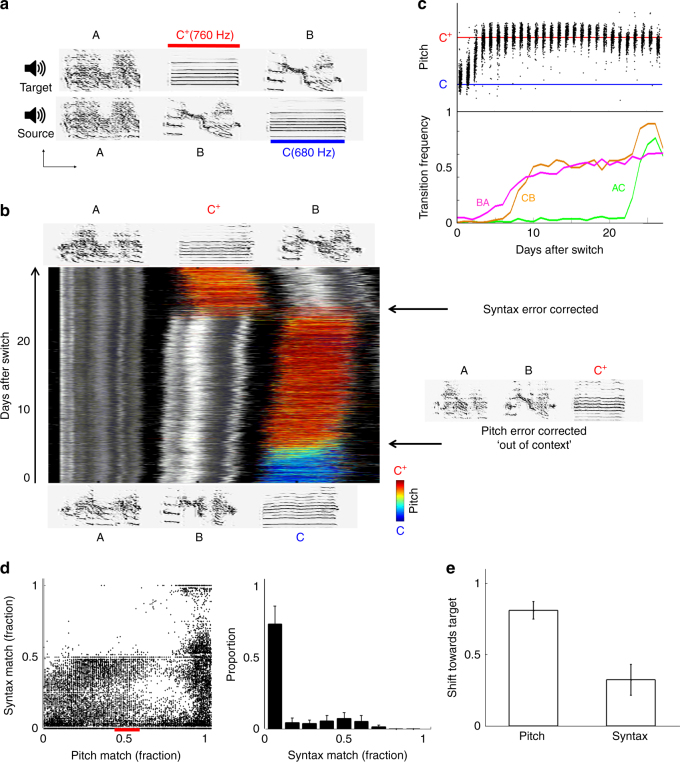Fig. 2.
Phonological error correction in individual syllables disregards global similarity. a Song models used for imitation task 1 ABC → AC+B (a single motif is shown; birds were trained with two motif repetitions). Scale bars for sonograms are 100 ms (x axis) and 2 kHz (y axis). The pitch of syllable C+ in the target song is shifted up by two semitones with respect to C in the source. b Developmental singing trajectory of an experimental bird trained with imitation task 1. Stack plot shows consecutive renditions of song motifs containing C/C+ syllables, over experimental days (day 0, switch to target training; instances of the transition BA, which the bird acquired early on, see c, are excluded from this plot). Colors, pitch of C/C+; grayscale, Wiener entropy in neighboring syllables. Example sonograms of the bird’s song at experiment start (bottom) and end (top). The bird first changed its song to ABC+ (sonogram on the right) and only afterwards corrected the syntax to AC+B (arrows). c Top, the median pitch of consecutive renditions of syllable C/C+ in the same experimental bird; bottom, the daily frequencies of target syllable transitions. d Left, scatter plot of the fraction of syntax correction vs. the fraction of pitch correction (0, source pitch/syntax; 1, target pitch/syntax) in consecutive data bins (bin size 30 samples with 25 samples overlap) across experimental birds trained with imitation task 1 (ABC → AC+B; n = 3) and imitation task 2 (ABC → A+C+B, only syllable C/C+ pitch correction included; n = 9; same for e); right, distribution of the fraction of syntax correction at 45–55% pitch correction (red horizontal bar on bottom of left panel); means ± s.e.m. across birds for each bin. When pitch reached half way to target, syntax was mostly unchanged. e Fraction of pitch and syntax correction at developmental endpoint (0, source pitch/syntax; 1, target pitch/syntax; means±s.e.m.)

